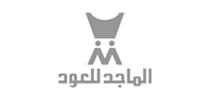Build, deploy, and optimize applications anywhere, simply, flexibly, and securely, with Cloud’s consistent development and operations experience for hybrid and multi-cloud environments.
Leverage Cloud’s end-to-end platform to accelerate your developer productivity, simplify operations, and build security and compliance into your software delivery process.
Develop, deploy, and scale applications fast and securely in a fully managed serverless environment. Google Cloud’s serverless compute platform abstracts away all infrastructure management by automatically scaling up and down from zero almost instantaneously, depending on traffic.
Take a deep dive into DevOps, the organizational and cultural movement that aims to increase software delivery velocity, improve service reliability, and build shared ownership among software stakeholders.
Our unique automated approach extracts critical application elements from the VM so you can easily insert those elements into containers in Kubernetes Engine (GKE) or Anthos clusters without the VM layers (like Guest OS) that become unnecessary with containers.
Accelerate application design and development with an API-first approach. Leverage Cloud’s API management platform to govern, analyze, and get visibility into all your APIs across hybrid and multi-cloud environments.
The practice of updating the older software for the new business needs and computing approaches using the modern technology stacks. including newer languages, frameworks, and infrastructure platforms. The outdated software can be a major hindrance for business technological growth and can be difficult to use as features not aligned with modern technology. This process allows us to enhance the older application and meet modern user expectations.
App modernization is benefiting businesses in multiple ways by allowing them to improve or scale their existing system, software or infrastructure not from scratch; that is of course a cost-effective and time-saving solution to meet the business needs. Some of App modernization benefits are:
The modern system allows to re-architect legacy code with modern open-source languages that reduce the cost for hiring a skilled team and application incidents.
By bringing the legacy software to the cloud by microservices and containerization, one can overcome the limitations of features & services which also give your organization the ability to add new features & functionality.
To make dev and admin teams more productive, move workforce to cloud and leverage existing services by reducing app incidence, improve team utilization, and adding new features & functionalities.
Modernization definitely improves the customer experience by enabling businesses to add new features, services, transforming the UI, automating the process & many more.
Unlock new revenue streams by updating the system and enable your business to create new services or processes that add value to the customer.
Refactoring and breaking down monolithic applications into a collection of small coupled microservices is a common pattern of application modernization.
In the microservices architecture, the application is broken down from a single, in multiple application to a collection of all of the separate services within the app, each with their database and data model.
Strangler pattern is not about breaking down the monolithic application all at once but a bit by bit. Identifying and analyzing the easiest and most valuable part first. This is the progressive approach, eventually, there’s nothing left of the monolith.
Cloud migration is also referred to as rehosting or lift and shift which is responsible for taking an existing application and moving to a new infrastructure. That is, moving the application from an on-premises server to a public cloud platform. There are little or no changes to the underlying code or architecture in this pattern. This feature makes it usually the least intensive approach.
When the original application is completely removed and is replaced with a new application that is suited to the current business needs, it is labeled as Rip and Replace. It is a swift process and helps in saving time and effort.
Another popular approach in modernization involves leaving an application in place but securely exposing its functions or data via APIs. This is an approach that is heavily based on integration rather than migration. It helps new, cloud-native applications utilize the existing systems and data’s advantages and capabilities.

We analyze the application on two major points - value to the business and their technical debt over time. Based on that prioritize the highest value and lower debts that lead to realizing the outcome and generate faster ROI on efforts.

Most of the projects have technological, cultural, or operational challenges. We start small and understand the refinement of the project and quickly pick up learning. This enables us to parallelly deliver measurable success to cement the buy-in of critical stakeholders.

Microservice approach defines the boundaries which are based on assumptions. Our architect system allows us to define the boundaries within the monolith system and test, develop, observe and break the system into well-defined microservices over time.

Everything as Code, essentially is to manage your infrastructure programmatically at every layer. Bringing in automation is not just bringing in optimization; we apply it to bring dynamism, agility, resilience, and security to your business and application. This creates a common language across teams and teams and paves a path for building/modifying features the right way.
We have led App Modernizations for large enterprises









